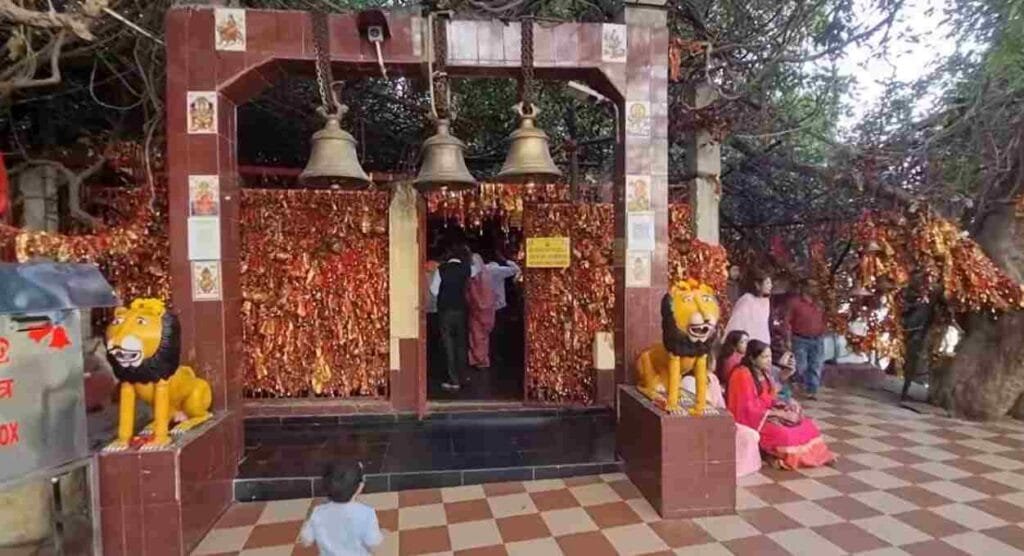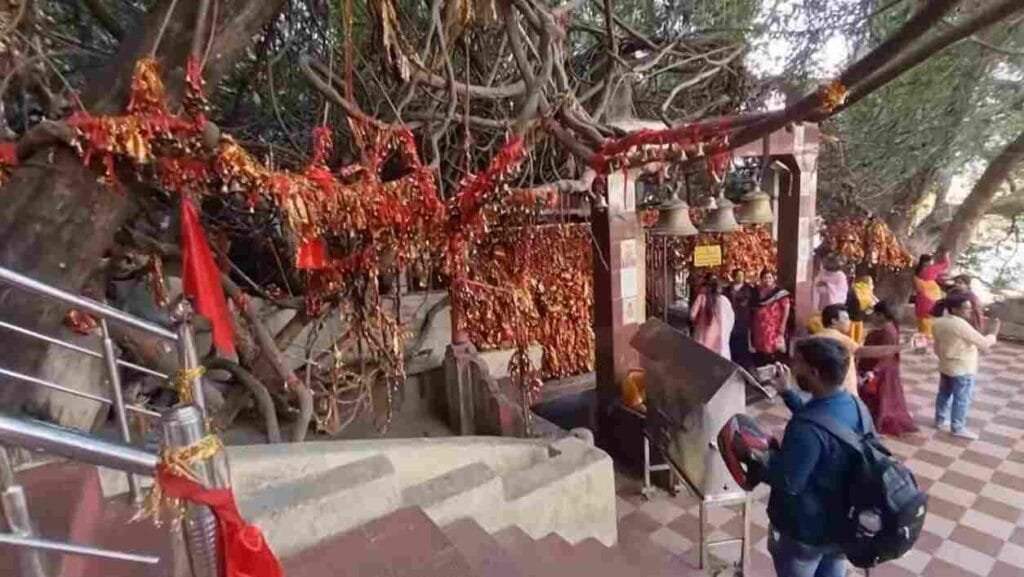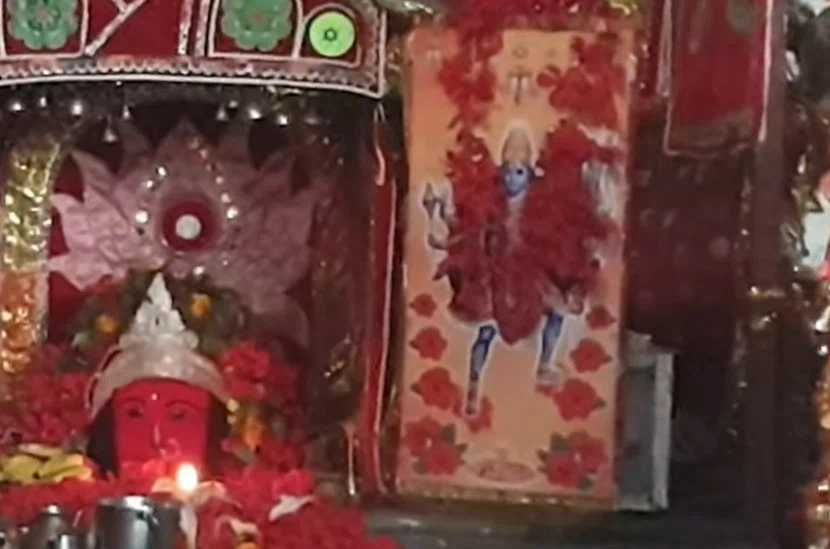Nestled in the serene surroundings of Chiplima, near Sambalpur in Odisha, the Ghanteswari Temple is a unique and spiritually significant destination. This temple, dedicated to Maa Ghanteswari, is renowned for its distinctive feature—bells.
Nestled along the banks of the Mahanadi River, the temple is surrounded by lush greenery, creating a peaceful and serene environment that draws devotees and tourists alike. Let’s delve into the history, legends, architectural marvels, and nearby attractions of this fascinating temple.

History of Ghanteswari Temple
The Ghanteswari Temple, also known as the “Temple of Bells,” has a rich history intertwined with local legends. It is believed that the temple was built by early sailors who used the sound of the bells as a navigational aid to avoid the treacherous waters of the Mahanadi River during heavy winds.
The temple’s name, “Ghanteswari,” literally translates to “Goddess of Bells,” reflecting the numerous bells that adorn the temple premises.
According to local folklore, devotees offer bells to Maa Ghanteswari as a token of gratitude after their wishes are fulfilled. The continuous ringing of these bells creates a mesmerizing and spiritual ambiance, attracting pilgrims from all over Odisha and beyond.
The Sacred Abode of the Goddess of Bells
The Ghanteswari Temple is dedicated to the Goddess Ghanteswari, also known as the deity of bells. Devotees offer bells to the goddess as a token of gratitude upon the fulfillment of their wishes, a tradition that has led to the temple being adorned with countless bells of varying sizes. This practice not only adds to the temple’s spiritual ambiance but also creates a mesmerizing visual and auditory experience for visitors.
A Lighthouse Without Light
Interestingly, the temple is also referred to as the “lighthouse without light.” This moniker stems from its historical role in guiding early sailors. The bells served as a warning system against heavy winds, helping sailors navigate safely through the treacherous waters of the Mahanadi River. This unique aspect of the temple highlights its significance beyond religious boundaries.

The Architecture and Design of Ghanteswari Temple
The Ghanteswari Temple shows simple yet charming architectural beauty. In contrast with the impressive temples in Puri or Bhubaneswar, this temple has a ͏modest and rural look that symbolizes its strong bond to nature and the uncomplicated religious lifestyle.
It is decorated with numerous differently sized bells ͏hung on trees, walls, and ceilings, forming an aesthetically pleasing structure. These bells serve a twofold purpose of alleviating the goddess while also fostering a peaceful ambiance for visitors.
The inside of the temple is compact yet exudes a strong spiritual ambiance. The center of development, Maa Ghanteswari shrine͏, is adorned with fl͏owers i͏nc͏ense and gifts from followers. From the outside temple, there is a breathtaking vista of the Mahʏanadi River, enhancing its allure.
Transformation After Hirakud Dam
With the construction of the Hirakud Dam, the once perilous waters of the Mahanadi River were tamed, making the area around the temple safer and more accessible. Despite these changes, the temple’s significance as a divine sanctuary remained intact. Pilgrims continue to visit, not just for spiritual solace but also to witness the unique charm of the temple adorned with thousands of bells.

Visiting Ghanteswari Temple in Chiplima, Odisha: A Comprehensive Guide
The Ghanteswari Temple, located in Chiplima, Odisha, is a unique spiritual destination known for its thousands of bells and its historical significance as a “lighthouse without light.” This guide provides all the essential information you need to plan your visit to this enchanting temple.
How to Reach
By Air: The nearest airport is Veer Surendra Sai Airport in Jharsuguda, approximately 80 km from Chiplima. Biju Patnaik International Airport in Bhubaneswar is about 300 km away.
By Train: The nearest railway station is Sambalpur, around 19 km from the temple.
By Road: Chiplima is well-connected by road. You can hire a taxi or take a local bus from Sambalpur, about 20 km away.
Festivals and Rituals
The temple is vibrant with various rituals and festivals throughout the year. Major festivals include:
Makar Sankranti: Celebrated with great fervor, attracting numerous devotees.
Navratri: A nine-day festival dedicated to the goddess, marked by special prayers and offerings.
Diwali: The festival of lights is celebrated with special rituals and decorations.
Devotees often offer bells to Maa Ghanteswari as a token of gratitude for fulfilled wishes. The temple is adorned with countless bells, creating a unique and spiritual ambiance.
Opening Time
The temple is open daily from 4:00 AM to 8:00 PM.
Entry Fee
There is no entry fee to visit the Ghanteswari Temple.
Best Time to Visit Ghanteswari Temple
The ideal time to visit Ghanteswari Temple is during the winter months (November to February), when the weather is cool and pleasant.
During this time, the temple is less crowded compared to the peak festival seasons, allowing visitors to experience the temple’s serenity without the hustle of large crowds.
However, if you wish to experience the temple during its most vibrant times, visiting during Navaratri or Makar Sankranti is highly recommended.
The monsoon season (June to September) is also a popular time for pilgrims, as the river is at its most majestic, but the roads may be more challenging to navigate due to heavy rains.
Regardless of when you choose to visit, Ghanteswari Temple promises an unforgettable experience filled with spirituality, natural beauty, and cultural richness.
Accommodation
While there are limited accommodation options in Chiplima, Sambalpur offers a range of choices, which is about 20 km away. Hirakud also offers some lodging options for visitors.
Some recommended options include Hotel Sheela Towers, Hotel Ashoka, Hotel Royal Palace, Hotel Pramod, Hotel Niiki, and Hotel Uphar Palace.
Nearby Attractions
While visiting the Ghanteswari Temple, there are several other attractions in and around Chiplima that you can explore:
1. Chipilima Hydro Power Plant: Located near the temple, this power plant is an engineering marvel and offers a glimpse into the region’s industrial prowess.
2. Hirakud Dam: One of the longest dams in the world, Hirakud Dam is a short drive ( About 36 km) from Chiplima and offers stunning views of the reservoir and surrounding landscapes.
3. Leaning Temple of Huma: Situated about 35 kilometers from Sambalpur, this temple is famous for its tilted structure and is dedicated to Lord Shiva.
4. Debrigarh Wildlife Sanctuary: A haven for wildlife enthusiasts, this sanctuary is home to various flora and fauna and offers opportunities for trekking and bird-watching.
Visiting the Ghanteswari Temple in Chiplima is a spiritually enriching experience, surrounded by natural beauty and cultural heritage. Plan your trip to immerse yourself in the divine ambiance and explore the rich traditions of Odisha.
♣♣You May Also Like: ⇓
- Vimala Temple, Puri: A Famous Divine Feminine Power
- Exclusive Ramachandi Temple, Puri: The Sacred Shakti Pitha
- Remarkable Mayadevi Temple: Heart of Konark’s Hidden Gem
- Beautiful Mahabodhi Temple: Heart of the Spiritual Glory
- Saptashrungi Devi: Veiled Majesty of Seven Peaks, 1 Goddess
Conclusion
In the heart of Odisha’s verdant landscapes, the Ghanteswari Temple is a beacon of tranquility and spiritual resonance. It is a place where the gentle chime of thousands of bells mingles with the whispers of history, creating a tapestry of cultural richness that envelops every visitor.
As the sun sets over the Mahanadi, casting a golden glow on the temple’s ancient walls, one cannot help but feel a sense of timeless wonder.
It is a testament to the enduring spirit of Odisha—a place where every clang is a story, every silence a prayer, and every visit an unforgettable chapter in the traveler’s diary.
So, as you plan your visit to this remarkable temple, remember that you are not just planning a trip; you are setting the stage for an encounter with the divine, a dance with culture, and a rendezvous with the serene beauty of Chiplima.
FAQ:
Do we have to cross a bridge over water to reach Ghanteswari Temple?
Yes, to reach the Ghanteswari Temple in Chiplima, you typically need to cross a bridge over the Mahanadi River.
The temple is situated on the banks of the river, and the bridge provides a scenic route, enhancing the spiritual journey with beautiful views of the water and surrounding landscape.
This crossing adds to the unique experience of visiting the temple, making it even more memorable.